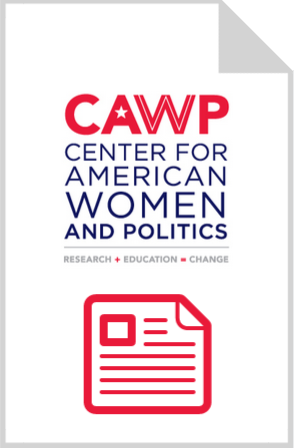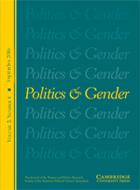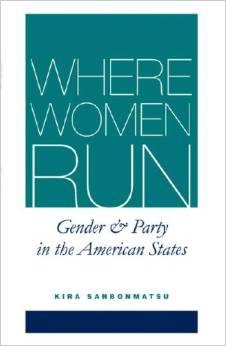2006: Summary of Women Candidates for State Legislative Office
Fact SheetElection WatchCandidates and CampaignsState LegislatureWomen in State Legislatures 2006
Fact Sheet ArchiveFact SheetState LegislatureStatewide Elective Executive Women 2006
Fact SheetFact Sheet ArchiveStatewide ExecutiveElection 2006: Results for Woman vs. Woman U.S. House Races
Fact SheetElection WatchCandidates and CampaignsCongressDo Parties Know that ‘Women Win’? Party Leader Beliefs about Women’s Electoral Chances
by Kira Sanbonmatsu
Politics & Gender 2006 (December)ArticleResearchCAWP ScholarPolitical PartiesCandidates and CampaignsGender Pools and Puzzles: Charting a 'Women's Path' to the Legislature
by Kira Sanbonmatsu
Politics & Gender 2006, Volume 2 (September)ArticleResearchCAWP ScholarCandidate RecruitmentState LegislatureMoms Who Swing, or Why the Promise of the Gender Gap Remains Unfulfilled
by Susan J. Carroll
Politics & Gender (2006)ArticleResearchCAWP ScholarWomen Voters and the Gender GapWhere Women Run: Gender and Party in the American States
by Kira Sanbonmatsu
University of Michigan Press, 2006, 264 pagesBookResearchCAWP ScholarPolitical PartiesCandidates and CampaignsCandidate RecruitmentWomen in the U.S. House of Representatives 2005
Fact SheetFact Sheet ArchiveCongressWomen in State Legislatures 2005
Fact Sheet ArchiveFact SheetState Legislature
Research and Scholarship
CAWP research and research by CAWP scholars that addresses emerging questions about American women's political participation.





